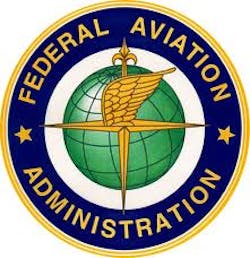President Obama signs FAA bill into law; work on unmanned integration into airspace, GPS-based air traffic management to begin
ARLINGTON, Va., 14 Feb. 2012. President Obama has signed the Federal Aviation Administration (FAA) Modernization and Reform Act 2012—with funding and provisions for granting military, commercial, and privately-owned unmanned aerial vehicles (UAVs) greater access to U.S. airspace and air traffic management systems modernization—into law. The bill includes “important provisions on the integration of unmanned aircraft systems (UAS) into the national airspace system,” according to an Association for Unmanned Vehicle Systems International (AUVSI) spokesperson; in fact, public airspace in the U.S. is expected to open to unmanned drone flights within four years. The bill will also help speed the switch to an air traffic control system based on GPS (global positioning system) technology, rather than on radar. The bill authorizes $63.4 billion in FAA funding over four years, of which roughly $11 billion will be employed in air traffic management (ATM) modernization. FAA staff has until June 2015 to develop new arrival procedures at 35 of the busiest U.S. airports. The NextGen system is expected to help the FAA accommodate projected growth in air traffic over the next decade. The airline industry, including aircraft owners and airline operators, will be expected to install satellite technology onboard airplanes. The GPS-based technology will actively and accurately update aircraft location and enhance pilots’ situational awareness, such that they can see the location of both their own aircraft and of other planes equipped with the technology. “In recognition of how fast UAS technology is advancing, in addition to the huge potential civil and commercial market, Congress included language requiring the FAA to expedite the safe integration of UAS into the national airspace. Congress set a deadline of 30 Sept. 2015 for full integration,” continues the AUVSI spokesperson.
“Technology is advancing to the point where we now know these systems can reliably fly. The next step is to work on the regulations that govern the rules of the sky to ensure that unmanned aircraft do no harm to other manned aircraft or to people or property on the ground,” explains Michael Toscano, AUVSI president and CEO.
According to AUVSI, major UAS provisions in the FAA bill include:
- Setting a 30 Sept., 2015 deadline for full integration of UAS into the national airspace
- Requiring a comprehensive integration plan within nine months
- Requiring the FAA to create a five-year UAS roadmap (which should be updated annually)
- Requiring small UAS (under 55 pounds) to be allowed to fly within 27 months
- Requiring six UAS test sites within six months (similar to the language in the already-passed defense bill)
- Requiring small UAS (under 55 pounds) be allowed to fly in the U.S. Arctic, 24 hours a day, beyond line-of-sight, at an altitude of at least 2,000 feet, within one year
- Requiring expedited access for public users, such as law enforcement, firefighters, emergency responders
- Allowing first responders to fly very small UAS (4.4 pounds or less) within 90 days if they meet certain requirements
- Requiring the FAA to study UAS human factors and causes of accidents
